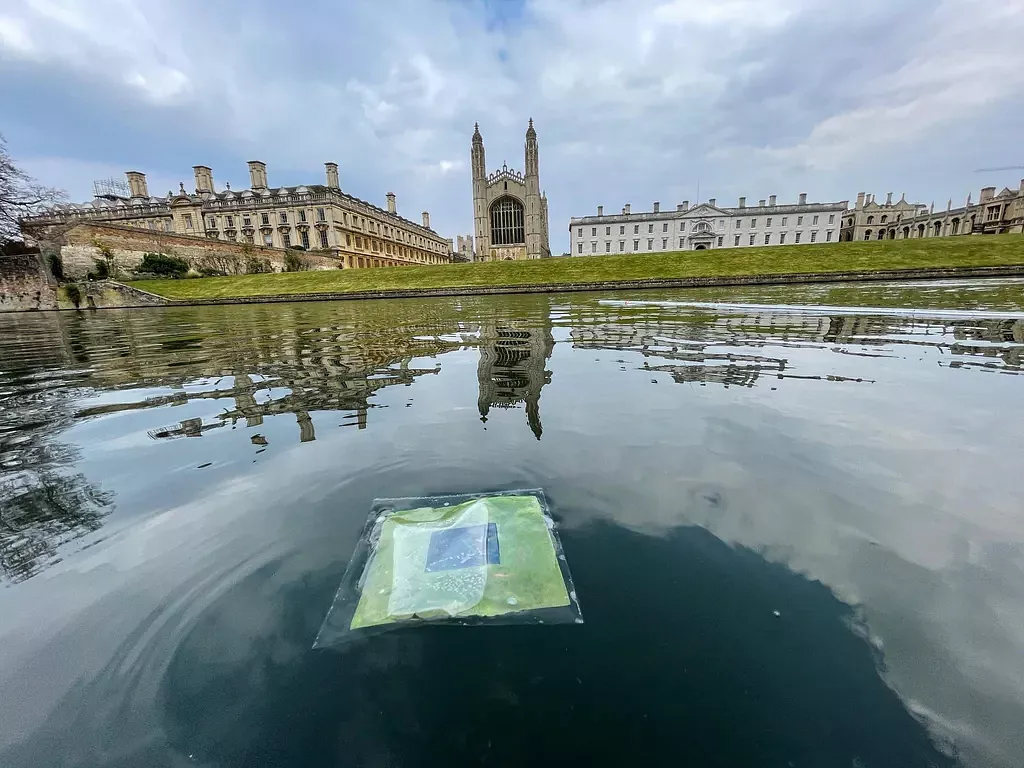Romanian researcher is part of Cambridge team that invented artificial fuel-producing leaves

A group of researchers based at Cambridge University has been working for several years under the guidance of Professor of Energy and Sustainability Erwin Reisner, in order to develop a scalable solution to the gigantic problems posed by energy and fossil fuel depletion.
As an alternative to petrol, the team developed floating artificial leaves that generate clean fuel from sunlight and water.
“The University of Cambridge researchers said they took inspiration for the ultra-thin, flexible devices from photosynthesis, the process by which plants convert sunlight into food,” writes BBC.
The path to this extraordinary scientific invention is as follows:
In 2019, the team developed an artificial leaf that makes syngas – a key intermediate in the production of many chemicals and pharmaceuticals – from sunlight, carbon dioxide, and water. However, this earlier prototype, which generated fuel by combining two light absorbers with suitable catalysts, incorporated thick glass substrates and moisture-protective coatings, which made the device bulky.
“Since they’re both heavy and fragile, they’re difficult to produce at scale and transport,” says Dr. Virgil Andrei, a Romanian researcher in Cambridge’s Yusuf Hamied Department of Chemistry, and the paper’s co-lead author.
“We wanted to see how far we can trim down the materials these devices use, while not affecting their performance,” says Reisner, who led the research.
“If we can trim the materials down far enough that they’re light enough to float, then it opens up whole new ways that these artificial leaves could be used.”
“If scaled up,” writes Sarah Collins for the University of Cambridge, “the artificial leaves could be used on polluted waterways, in ports or even at sea, and could help reduce the global shipping industry's reliance on fossil fuels.”
It would be the first time clean fuel has been generated on water.
For the new version of the artificial leaf, Collins explains that the researchers took their inspiration from the electronics industry, where miniaturization techniques have led to the creation of smartphones and flexible displays, revolutionizing the field.
In order to deposit light absorbers onto lightweight substrates and protect them against water infiltration, the team used thin-film metal oxides and materials known as perovskites, and then covered the devices with micrometer-thin, water-repellent carbon-based layers that prevented moisture degradation.
They ended up with a device that works (outdoor tests of the lightweight leaves on the River Cam showed that these devices can convert sunlight as efficiently as real plant leaves) whilst looking almost like a real leaf.
“This study demonstrates that artificial leaves are compatible with modern fabrication techniques, representing an early step towards the automation and up-scaling of solar fuel production,” says Andrei.
Of course, improvements will need to be made before these devices are ready to be used commercially, but the researchers say this development opens whole new avenues in their work.
“Many renewable energy technologies, including solar fuel technologies, can take up large amounts of space on land, so moving production to open water would mean that clean energy and land use aren’t competing with one another,” said Reisner. “In theory, you could roll up these devices and put them almost anywhere, in almost any country, which would also help with energy security.”
Virgil Andrei and Erwin Reisner are Fellows of St John’s College, Cambridge.
Their research was supported in part by the European Research Council, the Cambridge Trust, the Winton Program for the Physics of Sustainability, the Royal Academy of Engineering, and the Engineering and Physical Sciences Research Council (EPSRC), part of UK Research and Innovation (UKRI).
The results of their study have been published in the Nature journal.
More information is available on Virgil Andrei's Twitter feed.
(Photo source: Virgil Andrei's Twitter feed)













